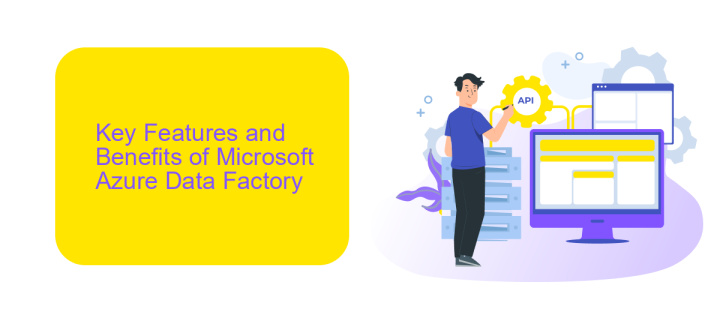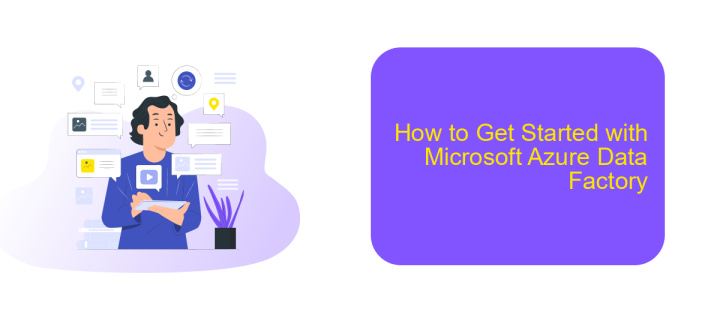What is Microsoft Azure Data Factory
Microsoft Azure Data Factory (ADF) is a cloud-based data integration service that allows you to create, schedule, and orchestrate data workflows. It enables seamless data movement and transformation across various sources and destinations, making it an essential tool for businesses aiming to leverage big data and analytics. ADF simplifies complex data processes, ensuring efficient and scalable data management in the cloud.
What is Microsoft Azure Data Factory?
Microsoft Azure Data Factory is a cloud-based data integration service that allows you to create, schedule, and orchestrate data workflows. It provides a platform for transforming raw data into meaningful insights by enabling seamless data movement and transformation across various data stores and services.
- Data Ingestion: Easily ingest data from multiple sources such as on-premises databases, cloud storage, and SaaS applications.
- Data Transformation: Utilize built-in connectors and activities to cleanse, transform, and enrich your data.
- Orchestration: Schedule and manage complex data workflows with a user-friendly interface.
- Monitoring: Track the performance and health of your data pipelines in real-time.
Azure Data Factory supports integration with various third-party services, including ApiX-Drive, which simplifies the process of setting up data integrations. ApiX-Drive offers a user-friendly interface to automate data transfers between different applications, making it easier to manage and synchronize your data workflows. This integration capability enhances the overall efficiency and reliability of your data processing operations.
Key Features and Benefits of Microsoft Azure Data Factory

Microsoft Azure Data Factory (ADF) is a powerful cloud-based data integration service that enables users to create, schedule, and orchestrate data workflows. One of its key features is the ability to handle complex ETL (Extract, Transform, Load) processes, making it easier to move and transform data across various sources. ADF supports a wide range of data connectors, allowing seamless integration with both on-premises and cloud-based data stores. This flexibility ensures that businesses can efficiently manage their data pipelines without worrying about compatibility issues.
Another significant benefit of Azure Data Factory is its scalability and cost-effectiveness. The service automatically scales to accommodate growing data volumes, ensuring optimal performance without requiring manual intervention. Additionally, ADF's pay-as-you-go pricing model allows organizations to control costs effectively. For those looking to streamline their data integration further, services like ApiX-Drive can be integrated with ADF to automate data transfers between different applications and systems, enhancing overall productivity and efficiency. With its robust features and benefits, Azure Data Factory is an ideal solution for modern data management needs.
Use Cases for Microsoft Azure Data Factory

Microsoft Azure Data Factory (ADF) is a powerful tool for managing and orchestrating data workflows. It enables businesses to move data between different storage systems, transform it into usable formats, and load it into data warehouses or other analytics platforms. ADF is particularly useful for organizations dealing with large volumes of data and complex data processing requirements.
- Data Migration: ADF facilitates seamless data migration between on-premises and cloud environments, ensuring data consistency and reliability.
- ETL Processes: It supports Extract, Transform, Load (ETL) processes, enabling businesses to transform raw data into actionable insights.
- Data Integration: ADF can integrate data from various sources, such as databases, APIs, and file systems, ensuring a unified view of data.
- Real-Time Analytics: With ADF, organizations can set up real-time data processing pipelines to support timely decision-making.
- Data Lake Management: ADF simplifies the management of data lakes, enabling efficient storage and retrieval of large datasets.
In addition to these use cases, tools like ApiX-Drive can enhance ADF's capabilities by providing seamless API integrations. ApiX-Drive allows businesses to automate data flows between different applications and services, further streamlining data processing and integration tasks. By leveraging both ADF and ApiX-Drive, organizations can achieve a more robust and efficient data management strategy.
How to Get Started with Microsoft Azure Data Factory

Getting started with Microsoft Azure Data Factory is straightforward and involves a few key steps. First, you need to have an Azure account. If you don't have one, you can sign up for a free trial on the Azure website. Once you have your account, log in to the Azure portal.
Next, create a new Data Factory instance. Navigate to the "Create a resource" section and search for "Data Factory." Follow the on-screen instructions to configure the basic settings like subscription, resource group, and region. After setting up your Data Factory, you can start creating pipelines to move and transform data.
- Navigate to the Data Factory UI
- Create a new pipeline
- Add activities to your pipeline
- Configure source and destination data stores
- Set up triggers to schedule your pipelines
For seamless integration with various data sources and destinations, consider using ApiX-Drive. This service simplifies the process of connecting different applications and automating data workflows, making it easier to manage your data pipelines in Azure Data Factory.
Conclusion
In conclusion, Microsoft Azure Data Factory stands out as a robust and versatile cloud-based data integration service. It enables organizations to efficiently orchestrate and automate data movement and transformation, ensuring seamless data flows across various sources and destinations. With its user-friendly interface and powerful features, Azure Data Factory simplifies the complexities of data integration, making it accessible for both technical and non-technical users.
Moreover, integrating Azure Data Factory with services like ApiX-Drive can further enhance its capabilities. ApiX-Drive offers an intuitive platform for setting up and managing integrations, allowing businesses to connect Azure Data Factory with a wide array of applications and services effortlessly. This synergy not only streamlines data workflows but also accelerates the process of deriving valuable insights from data. Ultimately, leveraging Azure Data Factory in conjunction with ApiX-Drive empowers organizations to harness the full potential of their data, driving informed decision-making and fostering innovation.


FAQ
What is Microsoft Azure Data Factory?
How does Azure Data Factory work?
What are the key components of Azure Data Factory?
Can I automate data workflows using Azure Data Factory?
How can I integrate Azure Data Factory with other services?
Time is the most valuable resource in today's business realities. By eliminating the routine from work processes, you will get more opportunities to implement the most daring plans and ideas. Choose – you can continue to waste time, money and nerves on inefficient solutions, or you can use ApiX-Drive, automating work processes and achieving results with minimal investment of money, effort and human resources.

